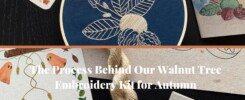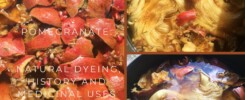
It’ll surprise literally none of you that plant dye and mending are topics I really care about, so it was only logical that I did a review of Katrina Rodabaugh’s latest book.
One night, I couldn’t sleep and did what we all do. I reached for my phone, went on Youtube and this time I fell down the rabbithole of mending videos. After taking up embroidery, it was only a matter of time until I get interested in sustainable mending. I was fascinated by the process and the beauty of techniques like Sashiko.
The following morning, I was researching visible mending books for beginners.
Enter Make, Thrift, Mend; catching my attention with its sexy tagline for textiles artists: Stitch, Patch, Darn, Plant-Dye & Love Your Wardrobe.
Review of Make Thrift Mend: Not just a plant dye and mending book
A very thoughtful book:
One thing I immediately liked and made me buy this book amid several options (that and the fact I was already following Katrina Rodabaugh on Instagram after my crazy visible mending hunting night) was the way it didn’t seem to focus only on the technical.
Indeed the book is divided into four parts: Build, Make, Thrift (and dye) and Mend.
I see it as kind of a guide on our sustainable textile artists/crafter/whatever you like to call yourself journey.
Women empowered slow fashion :
A guide and a journey call for mentors, or at least inspiring people to listen to.
In that case, Make, Thrift, Mend delivers (I told you it wasn’t just a plant dye and mending book review).
This book is full of women sharing their thoughts and knowledge about slow fashion.
The book starts with a beautiful and inspiring quote from Robin Wall Kimmerer about earth feeding us, even in its wounded state and us having to return the gift.
And it keeps going from there with thoughts pieces from respected makers, designers and dyers such as Christi Johnson, Hikaru Noguchi or India Flint.
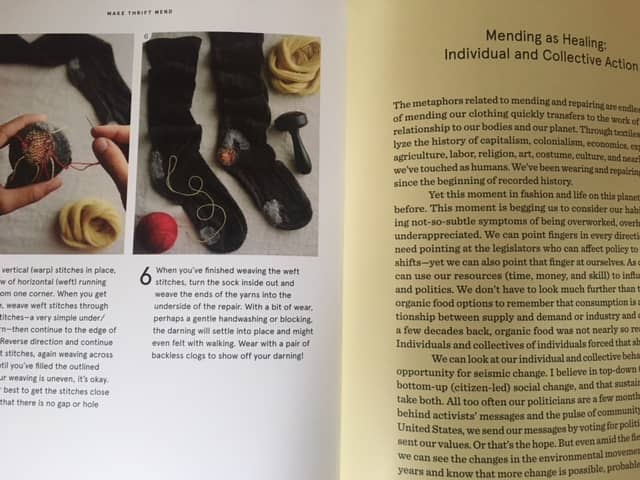
Inspiring plant-dyed and mending projects (I mean, it’s one of the goals of this book review: to be inspired!)
Of course, it’s better to read it firsthand so let me show you two visuals of the book instead.
I immediately loved this simple and yet power moon embroidery on an indigo dyed dress the first time I saw in On Instagram.
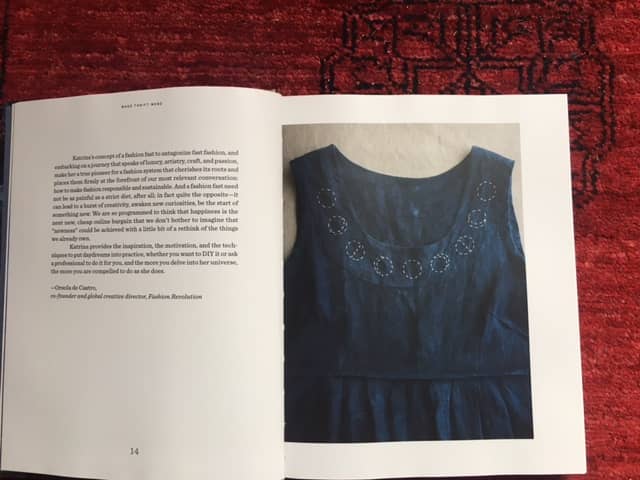
And this embroidered poem pocket was a wonderful surprise when I received my copy of the book and stumbled upon it. Looks incredibly cool, right?
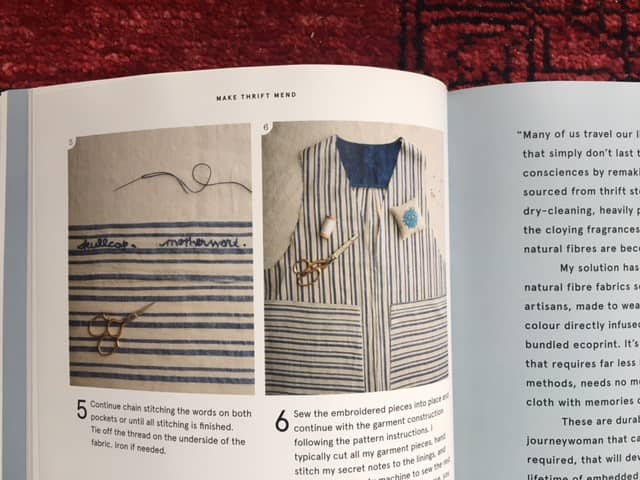
The 10 steps of slow fashion
Let’s go back to the first section: Build.
The name says it all, it helps you build the steps towards your own Slow Fashion wardrobe.
Of course, you can add more steps but Katrina Rodabaugh suggests a journey that starts with Pause, Assess, Organize then find what Inspire you, Research it, Gather it.
Finally she ends with steps focused on mindfulness and sharing : Donate, Care, set and honour Boundaries.
Her last step is all about your goal.
What led you to this slow fashion journey? In her case, it’s all about Connection.
A quick overview of the projects:
It may seem a bit overwhelming, laid out like that but Katrina Rodabaugh separated it all in nice, easy chunks and suddenly it sounds like reachable goals.
Make, Thrift, Mend really motivates you to start this journey with the pretty pictures of several projects like redesigning vintage, a whole section with dyeing projects and several illustrated mending projects. Every time there is an easy How-to with pictures and detailed steps for techniques.
I really like that it’s not just a pretty book where you look at the projects, but you won’t ever make them because there is just this extra step that seems too difficult or this thing you need to buy only for this one project.
Everything is clear, useful and practical and with a relaxing aesthetic.
I really want to go rest in some of these pictures while having tea with all these awesome ladies.
My own mending project while I started the review of this book (not plant dyed but I will next time!)
What finally pushed me to start mending
Of course, once I got the book I wanted to try one of the projects.
I own a pair of soft and sturdy secondhand jeans that need some serious mending to be worn again but the project seemed a bit overwhelming for my first try.
Luckily, my mother has a pair of comfy jeans she really loves and they had a hole! I was quick to jump on the opportunity to test visible mending on them (not like we fought, she hates sewing ; )
Which mending project I selected
Like I mentioned earlier, I particularly enjoy the practical side of this book. In the Mend section, you can find explanations for which tools and materials to use and of course, the techniques.
Then you get 5 steps by steps mending projects and 3 darning projects (that will come handy soon too!).
The jeans I wanted to mend had a hole on the front leg so it was easy to select the Patchwork Pant Leg project and just follow the instructions.
The different steps of my own mending project
I had an old pair of jeans short from way back when I lived one year in London and was living the concert goer life (this paired with holey leggings was the wild look of my twenties, don’t judge me).
I was this close to throw them away when I read that visible mending was all about reusing old denim.
So I cut a piece of those, giving them a second life and followed the whole measuring, pining and tracing lines steps.
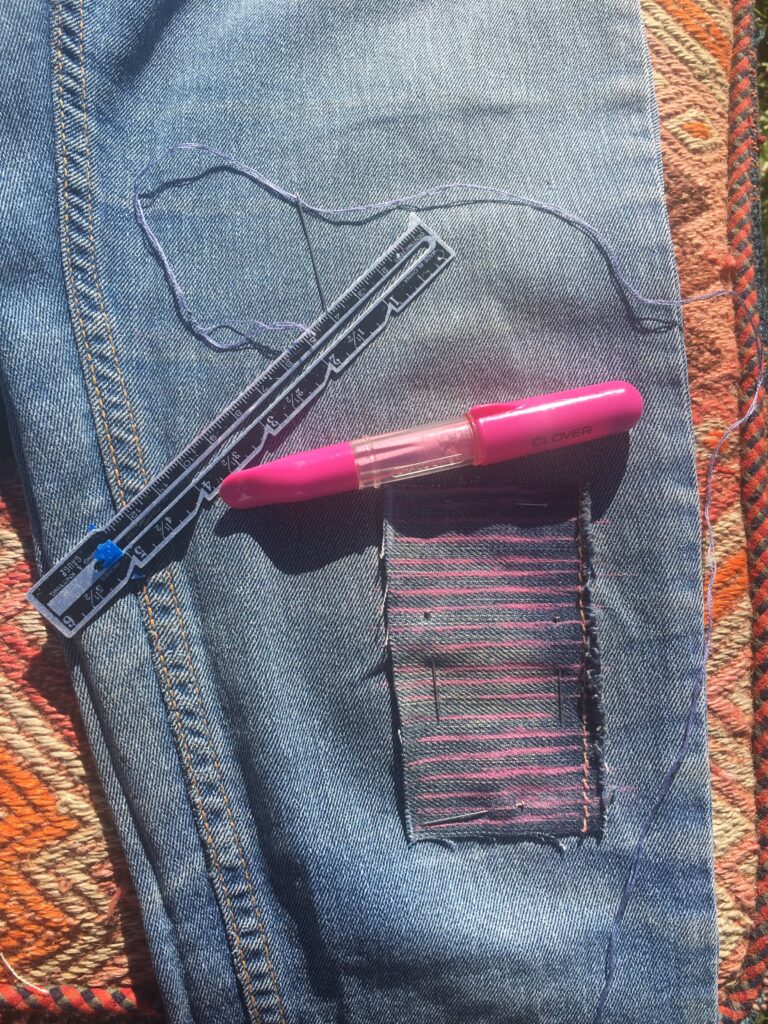
Then I used some contrasting embroidery thread (I doubled it for more sturdiness) and did a running stitch.
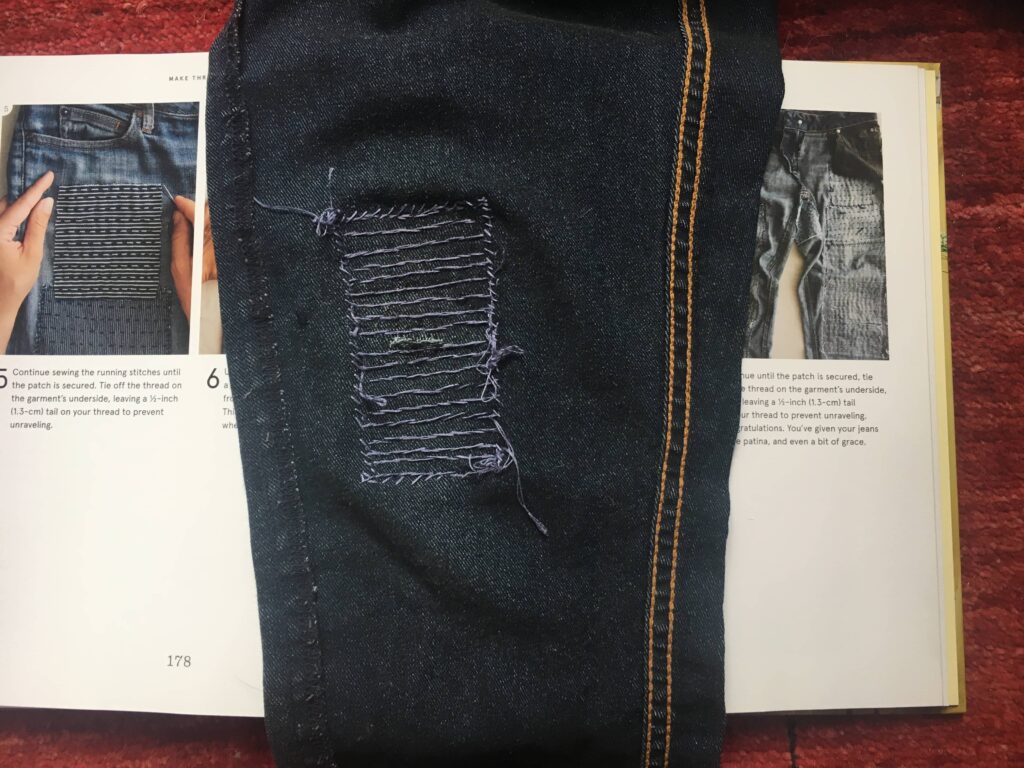
Then I ended with a whipstitch and tadaa, look at how cute these jeans are!
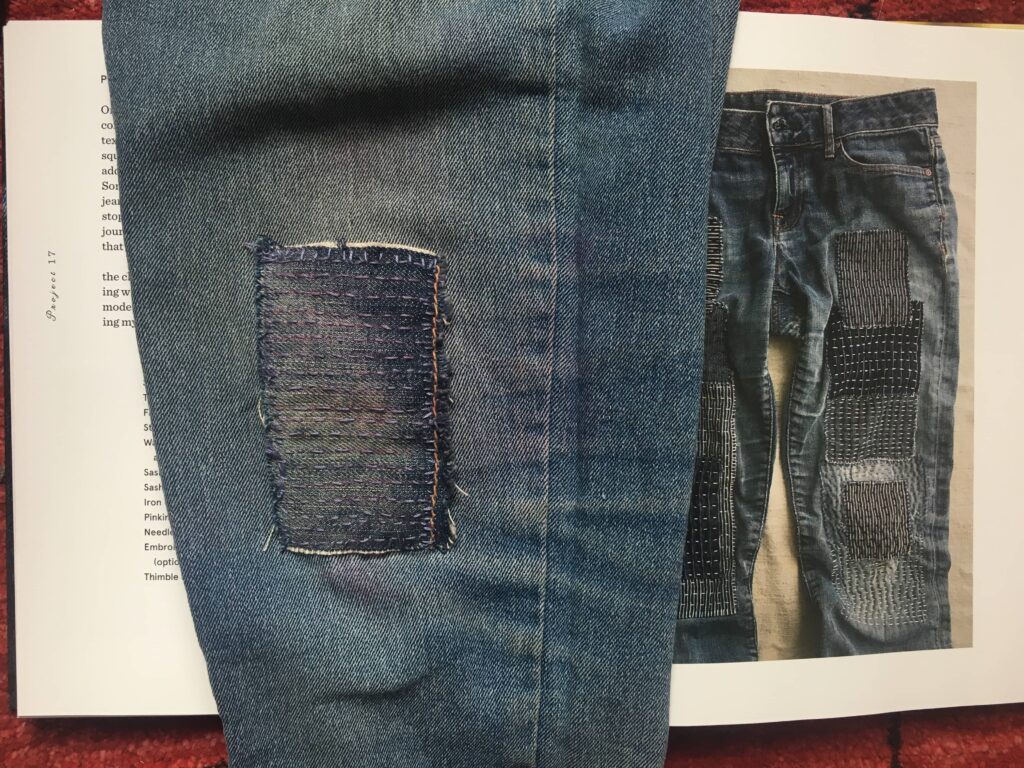
Make, Thrift, Mend is definitely not just a plant dye and mending book like I already said through this review.
It’s a book celebrating the ressources that nature has giving us and how we shouldn’t waste them.
Being mindful of what we wear, how we wear it and take care of it is important because our wadrobe is a way to presenting ourselves to the world.
And we want to show the world we are mindful of the environment if we want changes to happen.
So go read what all these very cool ladies had to say about the subject. Then hopefully, it will make you want to try your hand to a plant dyed project that you can mend yourself!
